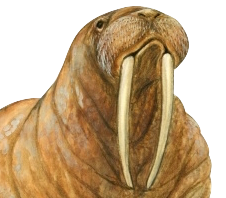ESP32, DS18B20, TM1637 integration: Displaying temperature data
In a previous post I wrote about displaying arbitrary data on a TM1637-based 4 digit LED display, highlighting an ESP-IDF component that I extended to display positive and negative floating point numbers. Now we’re going to put that component to use and display actual data from a DS18B20 temperature sensor.
The {% asset_link DS18B20.pdf “DS18B20” %} temperature sensor operates on the Dallas Semiconductor 1-Wire bus. In this application, we aren’t powering the devices using parasitic power. Instead we’re powering the device from an external supply.
Since we’re using a 3.3v bus, the pullup resistor on DQ is 2.2KΩ, not 4.7K.
In addition to my modified TM1637 component, the project uses David Antliff’s components for the 1-Wire bus protocol and the DS18B20 digital thermometer. You’ll need to follow the instructions in the project README file to clone the project and recurse the three submodules.
Usage
After cloning the project, you’ll need to configure the GPIO pins in use using make menuconfig. One GPIO is used for the 1-Wire bus and two lines are used for each TM1637 display for a total of 5 GPIO pins. Be careful that you do not use pins that are in use for other purposes on your particular board. For example, I initially use GPIO12 for one of the TM1637 displays, but when connected, was unable to flash the ESP32. It appears that GPIO12 is used as a bootstrapping pin. On the particular board I used for this project, I believe that GPIO12 needs to be pulled low at reset but the TM1637 was not permitting it. Moving do another GPIO solved the problem.^[More about GPIO12 here]
After completing the hardware connections and specifying them in make menuconfig, you can then simply make flash to upload the application to the device.
All of the source code is on github.
References
- Source code for this project
- TM1637 datasheet
- DS18B20 datasheet
- My improved ESP32 TM1637 component
- esp32-owb - David Antliff’s ESP32-compatible C library for the 1-Wire bus protocol
- esp32-ds18b20 - and his ESP32 C component for the DS18B20 digital thermometer
- Source for the TM1637-based displays - This company also has presence on Aliexpress which is where I ordered these inexpensive displays.^[I prefer these displays to the 74HC595 because the TM1637 handles all of the multiplexing for you, whereas the shift-register displays require the host controller to take on constant refreshing of the display.]
- Pinout of the Doit ESP32 DEVKIT V1 - the board used in this project.

